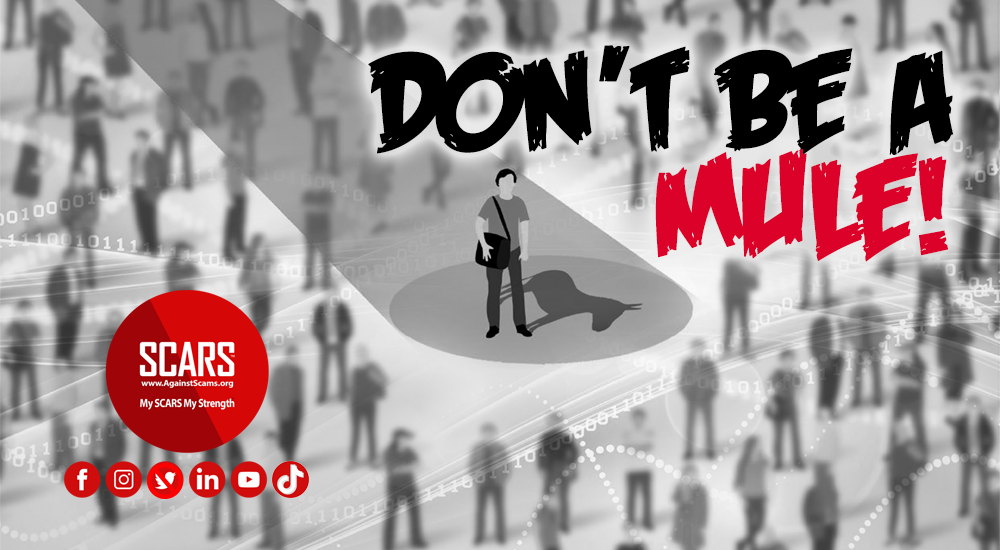White-Collar Crime Includes Scams
These crimes are not violent, but they are not victimless. White-collar crimes can destroy a company, wipe out a person’s life savings, cost investors billions of dollars, and erode the public’s trust in institutions.
The following are examples of White-Collar Crime
Online Financial Fraud
Of course, everyone online understands and knows about these. We will not explore these in this article, except to say that most forms of online scams fall into this category.
Corporate Fraud
These involve accounting schemes and self-dealing by corporate executives, as well as obstruction of justice (activities designed to conceal this type of criminal conduct).
Fraud investigations primarily focus on:
- Falsification of financial information:
- False accounting and/or misrepresentations of financial conditions
- Fraudulent trades designed to inflate profits or hide losses
- Illicit transactions designed to escape regulatory oversight
- Self-dealing by corporate insiders:
- Insider trading (stock trading based on material, non-public information)
- Kickbacks
- Misuse of corporate property for personal gain
- Individual tax violations related to self-dealing
Money Laundering
Money laundering is turning “dirty” money “clean” by making it look like money from crimes actually came from legitimate sources.
Money laundering allows criminals to:
- hide and accumulate wealth
- avoid prosecution
- avoid taxes
- increase profits through reinvestment
- fund further criminal activity
These investigations on money laundering facilitation include: targeting professional money launderers, key facilitators, gatekeepers, and complicit financial institutions, among others.
Criminals who engage in money laundering derive their proceeds through:
- Complex financial crimes
- Health care fraud
- Human trafficking
- International and domestic public corruption
- Narcotics trafficking
- Terrorism
Criminals use a number of tools to launder money, including:
- Financial institutions
- International trade
- Precious metals
- Real estate
- Third-party service providers
- Virtual currency
- Buying and Selling Goods and Services
There are three steps in the money laundering process—placement, layering, and integration:
- Placement is the criminal entering money into the financial system.
- Layering is the most complex and often involves moving money internationally. Layering separates the criminal’s money from the original source and creates a complex audit trail through a series of financial transactions.
- Integration occurs when the criminal’s proceeds are returned to them from what appear to be legitimate sources.
These investigations regularly coordinate with multiple law enforcement agencies, international partners, and industry to detect and disrupt money laundering.
Securities and Commodities Fraud
The creation of complex investment vehicles and the tremendous increase in the amount of money being invested have created greater opportunities for individuals and businesses to create fraudulent investment schemes.
To investigate and help prevent fraudulent activity in the financial markets, the Bureau works closely with various government and private organizations to investigate securities and commodities fraud.
Mortgage and Financial Institution Fraud
Financial institution fraud happens when criminals target banks, credit unions, and other financial institutions. Many schemes involve compromising customers’ accounts or personal information. Embezzlement and misapplication of funds are two common financial institution fraud crimes in FBI investigations. Sometimes, fraud can be severe enough to cause the failure of a bank or credit union.
Mortgage fraud happens when someone lies to influence a bank’s mortgage decision or if a distressed homeowner is the victim of a fraud.
There are two areas of mortgage fraud:
- Fraud for profit: This type of fraud involves professionals in the home buying process stealing cash and equity from lenders and homeowners. These types of cases area priority for the FBI.
- Fraud for housing: This fraud happens when borrowers lie about their incomes or assets on a loan application or influence an appraiser to manipulate a property’s value.
To investigate mortgage and financial institution fraud cases law enforcement participates in task forces that share intelligence, de-conflict cases, and create joint investigations.
Intellectual Property Theft/Piracy
Intellectual property theft involves robbing people or companies of their ideas, inventions, and creative expressions—known as intellectual property. This can include everything from trade secrets to proprietary products to movies, music, and software.
Intellectual property theft costs U.S. businesses billions each year.
The FBI’s intellectual property investigations focus on the theft of trade secrets and copyright infringement on products that can impact people’s health and safety, like counterfeit parts for cars and electronics. The FBI works with partners in the private sector and other law enforcement agencies at all levels to investigate these cases.
Learn more at the National Intellectual Property Rights Coordination Center: http://iprcenter.gov/
Similarly, economic espionage costs the American economy hundreds of billions of dollars per year and puts our national security at risk. In these cases, foreign competitors deliberately target economic intelligence in advanced technologies and successful U.S. industries.
One thing that Impersonation Fraud Victims rarely employ is the removal of their stolen identities using complaints of copyright infringement. Once a publisher, platform, or app is notified of an infringement they must remove the infringing content (images) immediately (per the Digital Millennium Copyright Act.)
-/ 30 /-
What do you think about this?
Please share your thoughts in a comment below!
RATE THIS ARTICLE?
LEAVE A COMMENT?
Recent Comments
On Other Articles
- Nikolaus on Dating Scammers Paradise: Ivory Coast: “The Ivory Coast romance scam is still going on. It seems that local authorities don’t handle the issue effectively!” Dec 10, 02:17
- on The SCARS Institute Top 50 Celebrity Impersonation Scams – 2025: “Thank you – we will.” Dec 7, 11:41
- on The SCARS Institute Top 50 Celebrity Impersonation Scams – 2025: “You should add Sean Bean to your list of Celebrities. This one is very good, and persistent. He will be…” Dec 2, 12:07
- on How You Think & Talk About Your Scam Affects Your Recovery: “I have hung on to the scams for far too long. With the intervention of an all-merciful God, I have…” Nov 6, 22:13
- on Disengaging From A Fake Scam Relationship: “Taci, you may want to join our new support community at www.SCARScommunity.org” Nov 6, 03:01
- on Disengaging From A Fake Scam Relationship: “This particular article helped me discover the many things I did wrong the first time I was scammed. I should…” Nov 5, 22:49
- on About the SCARS RomanceScamsNOW.com Website – 24 Years Published: “It was unavailable for a few days, but it is available again. If he would be interested, he is welcome…” Nov 5, 00:59
- on About the SCARS RomanceScamsNOW.com Website – 24 Years Published: “My husband has been scammed and your classes have been helping him but now he can’t seem to access them.…” Oct 26, 14:57
- on Talia Shepard – Impersonation Victim – Stolen Photos – 2024: “Hi, I’m Patrick from Belgium and I found this site by chance, so I just got to know it, and…” Oct 17, 23:46
- on Talia Shepard – Impersonation Victim – Stolen Photos – 2024: “Hallo ik ben Patrick uit Belgie en het is in verband over PayPal. Ik heb het dit jaar spijtig genoeg…” Oct 17, 23:08
ARTICLE META
Important Information for New Scam Victims
- Please visit www.ScamVictimsSupport.org – a SCARS Website for New Scam Victims & Sextortion Victims
- Enroll in FREE SCARS Scam Survivor’s School now at www.SCARSeducation.org
- Please visit www.ScamPsychology.org – to more fully understand the psychological concepts involved in scams and scam victim recovery
If you are looking for local trauma counselors please visit counseling.AgainstScams.org or join SCARS for our counseling/therapy benefit: membership.AgainstScams.org
If you need to speak with someone now, you can dial 988 or find phone numbers for crisis hotlines all around the world here: www.opencounseling.com/suicide-hotlines
A Note About Labeling!
We often use the term ‘scam victim’ in our articles, but this is a convenience to help those searching for information in search engines like Google. It is just a convenience and has no deeper meaning. If you have come through such an experience, YOU are a Survivor! It was not your fault. You are not alone! Axios!
A Question of Trust
At the SCARS Institute, we invite you to do your own research on the topics we speak about and publish, Our team investigates the subject being discussed, especially when it comes to understanding the scam victims-survivors experience. You can do Google searches but in many cases, you will have to wade through scientific papers and studies. However, remember that biases and perspectives matter and influence the outcome. Regardless, we encourage you to explore these topics as thoroughly as you can for your own awareness.
Statement About Victim Blaming
Some of our articles discuss various aspects of victims. This is both about better understanding victims (the science of victimology) and their behaviors and psychology. This helps us to educate victims/survivors about why these crimes happened and to not blame themselves, better develop recovery programs, and to help victims avoid scams in the future. At times this may sound like blaming the victim, but it does not blame scam victims, we are simply explaining the hows and whys of the experience victims have.
These articles, about the Psychology of Scams or Victim Psychology – meaning that all humans have psychological or cognitive characteristics in common that can either be exploited or work against us – help us all to understand the unique challenges victims face before, during, and after scams, fraud, or cybercrimes. These sometimes talk about some of the vulnerabilities the scammers exploit. Victims rarely have control of them or are even aware of them, until something like a scam happens and then they can learn how their mind works and how to overcome these mechanisms.
Articles like these help victims and others understand these processes and how to help prevent them from being exploited again or to help them recover more easily by understanding their post-scam behaviors. Learn more about the Psychology of Scams at www.ScamPsychology.org
Psychology Disclaimer:
All articles about psychology and the human brain on this website are for information & education only
The information provided in this article is intended for educational and self-help purposes only and should not be construed as a substitute for professional therapy or counseling.
While any self-help techniques outlined herein may be beneficial for scam victims seeking to recover from their experience and move towards recovery, it is important to consult with a qualified mental health professional before initiating any course of action. Each individual’s experience and needs are unique, and what works for one person may not be suitable for another.
Additionally, any approach may not be appropriate for individuals with certain pre-existing mental health conditions or trauma histories. It is advisable to seek guidance from a licensed therapist or counselor who can provide personalized support, guidance, and treatment tailored to your specific needs.
If you are experiencing significant distress or emotional difficulties related to a scam or other traumatic event, please consult your doctor or mental health provider for appropriate care and support.
Also read our SCARS Institute Statement about Professional Care for Scam Victims – click here to go to our ScamsNOW.com website.


















Thank you for your comment. You may receive an email to follow up. We never share your data with marketers.